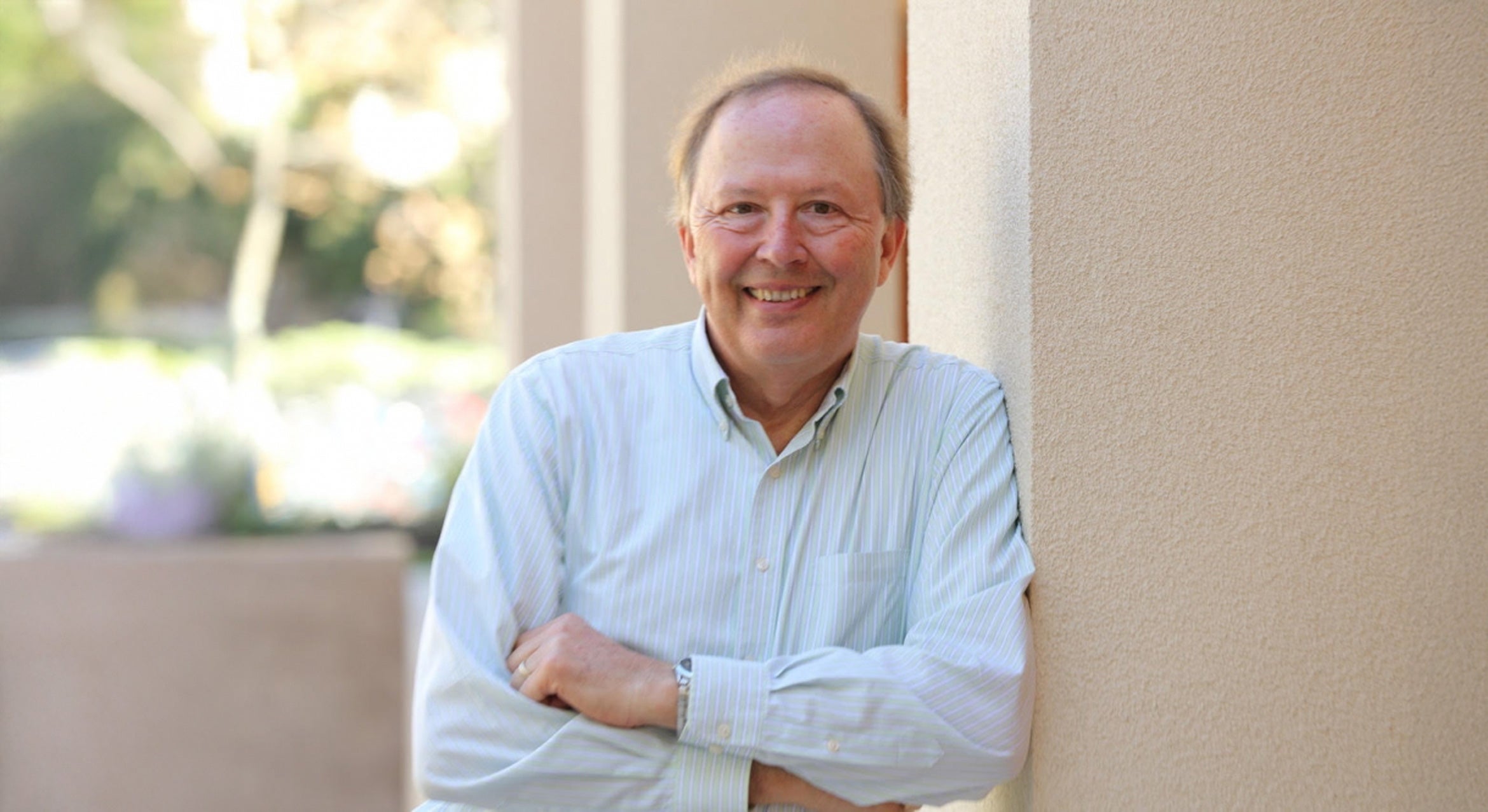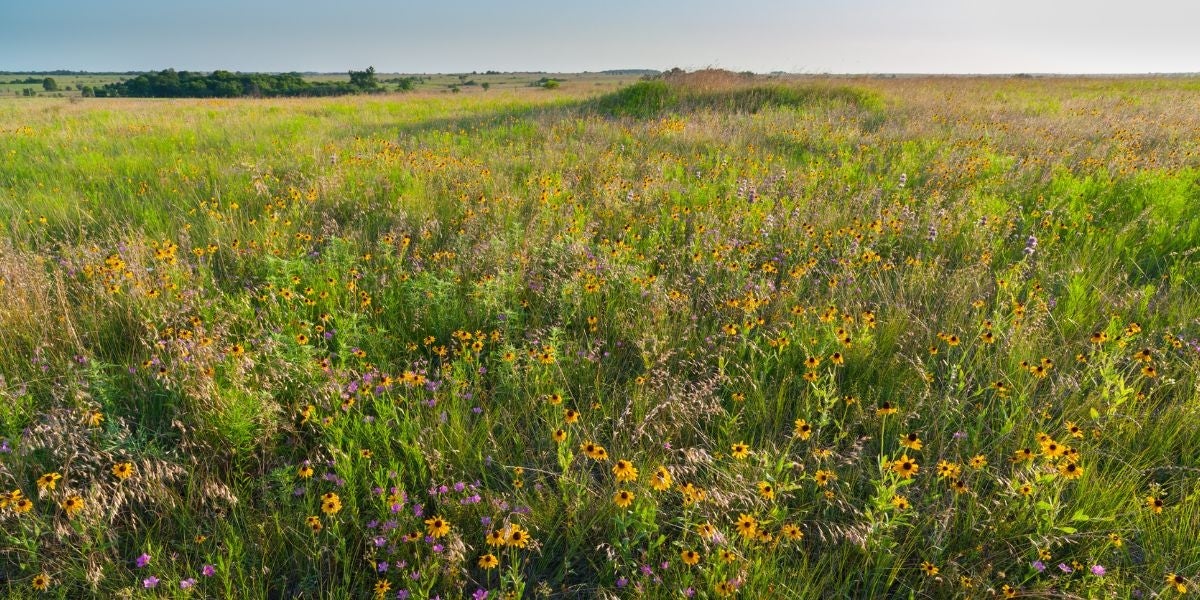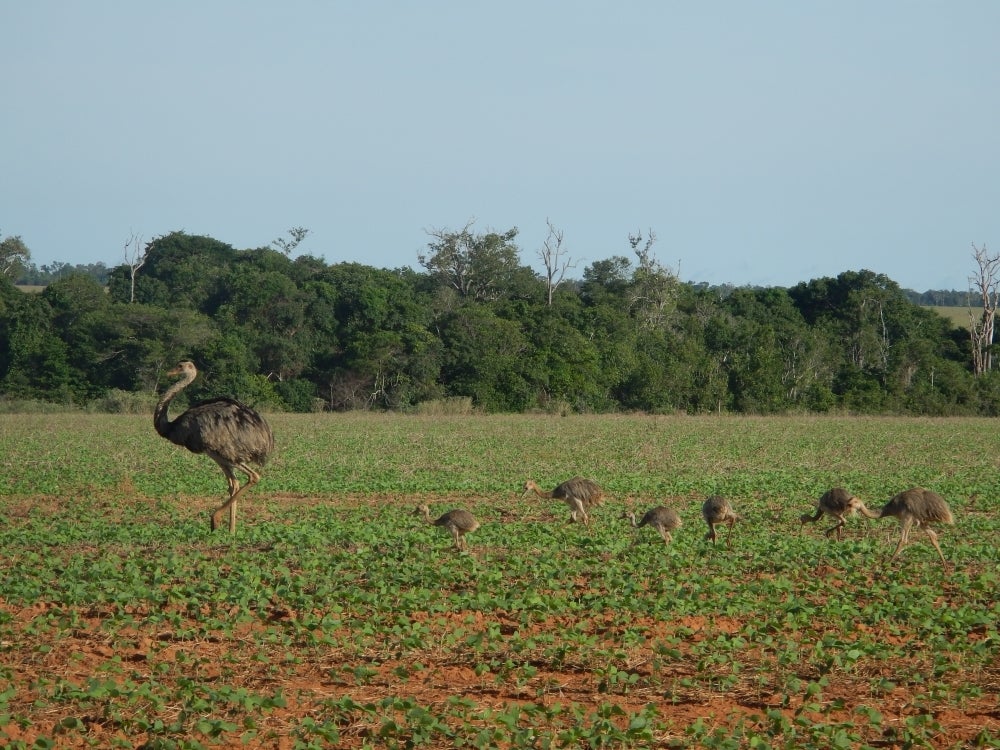
Professor David Tilman awarded National Medal of Science for revealing the importance of biodiversity
Greater biodiversity promotes ecosystem health, resilience and productivity. This tenet has become a cornerstone of conservation, a centerpiece of resource management and a paradigm of academic research. But when David Tilman proposed the idea in the mid 1990s, it ran against most established thought on the matter.
Three decades later, his work on biodiversity and conservation has earned him the National Medal of Science, America’s highest scientific honor.
“It feels special because it’s my nation saying that my life’s work is appreciated. And that is an amazing feeling,” said Tilman, a distinguished professor at UCSB’s Bren School of Environmental Science & Management.
“UC Santa Barbara is tremendously proud that Dr. Tilman has received this most prestigious national award,” said Chancellor Henry T. Yang. “Dr. Tilman is a pioneering ecologist who has made transformative contributions to the field of biodiversity and beyond, and this medal honors his remarkable achievement and impact.”
The mystery of biodiversity
As a student, Tilman was far more interested in mathematics and physics than squishy subjects like biology. “I was a Sputnik era kid,” he remarked. But after two weeks of lectures on ecology in an undergraduate biology course he became captivated by the field’s potential.
Ecologists study the interactions between species, their environment and each other. “At that time most ecologists had a favorite kind of organism they studied: birds or plants or butterflies or beetles,” he said. “I wanted to study ideas. And I wanted to use mathematics and experiments to do my work.”
Tilman wanted ecology to become a predictive, mechanistic science so that society could understand nature well enough to manage it more wisely. Understanding the mechanisms underpinning these systems is essential for curing the problems we were creating, and for preventing future problems. “Now that’s not a one-person goal. And it’s not a single lifetime goal. But we’ve gone a long way in that direction during my 50-plus years as an ecologist,” he reflected.
He was particularly curious about the causes and effects of species diversity. The quandary of biodiversity stretches back into prehistory: Why should the Earth have such a profusion of different kinds of life. Every creation myth tackles the topic; Charles Darwin pondered the question at the dawn of evolutionary biology; and it was still a mystery in the 20th century. “When I got into the field, there was absolutely no logic, no mathematics, that could explain why the world had become so diverse,” Tilman said.
Competition leads to diversity
Tilman began to study the effects of competition between different grasses in America’s prairies. He noticed that, as plants competed with each other, their coexistence required tradeoffs. As a result, each species became more specialized.
Consider two common grasses of the American plains: Kentucky bluegrass and big bluestem grass. The former evolved to thrive in cooler conditions than the latter. As a result, bluegrass predominates during the spring, setting seed during early summer, just as the big bluestem is coming into its own. The tradeoffs that enable them to coexist even as they compete with each other come down to the optimal temperature windows of the proteins each species uses.

“All species experience unavoidable tradeoffs. Tradeoffs force each species to specialize. Specialists can coexist when they compete. And that is why the world became so diverse,” Tilman said.
“Each species is like a human profession in the economy,” he explained. “Doctors can’t outcompete lawyers when it comes to matters of law, and vice versa.”
And just like a robust economy requires a workforce with diverse skills, Tilman discovered that a healthy ecosystem requires a diverse community of organisms. “The same forces that led to the evolution of high diversity simultaneously meant that diversity was incredibly important for how ecosystems function,” he said.
The makings of a resilient system
Tilman was met with stiff skepticism when he presented his initial research suggesting the importance of diversity in 1994. “At that time, 95% of all ecologists in the world thought that diversity did not matter, and if it did, they thought it likely made systems less stable,” he said.
Work on population dynamics by renowned scientist Lord Robert May had suggested that higher diversity would decrease a system’s stability. This aligns with our intuitions on most engineered systems, which become more fragile as their complexity increases. The intricacies of a pocket watch, for instance, seem to invite more opportunities for something to go awry.
“But that has to do with the least stable element in the system,” Tilman explained. A pocketwatch breaks if you take out one part. However, an ecosystem doesn’t fail in the same way as a timepiece because diversity leads to functional overlap, where similar organisms can take over aspects of one species’ role if it disappears.
His grassland research vividly illustrated the benefits of biodiversity. Tilman found that plots with more species were more resilient to severe drought. The least diverse plots lost 90% of their biomass, compared to 50% at the other end of the spectrum. And this biodiversity project is still running at the University of Minnesota’s Cedar Creek Ecosystem Science Reserve, where Tilman has a dual appointment as Regents' Professor.
A simple premise with far-reaching implications
Once Tilman realized the incredible importance that biodiversity served in a functioning ecosystem — and all of the services and goods it provides — he became very concerned over extinction and habitat destruction. “I’ve spent much of my time in the last 20 years trying to find ways to minimize those human impacts, to prevent future extinctions,” he said.
And the most harmful action in this regard is clearing land for agriculture. This is currently proceeding rapidly in the tropics, which host the majority of the planet’s biodiversity. As a result, Tilman has turned his attention toward agriculture and diet.

The practice of converting land for cultivation stretches back to the neolithic, and humans have a clear preference for a specific kind of scenery. Homo sapiens evolved in the African savanna, and wherever we go, we turn the landscape into a grassland. “We love savannas,” Tilman said. “It’s deep in our roots.” Even our most important crops are grasses. Globally, humans get about 51% of their calories from corn, rice and wheat, according to WorldAtlas.
Human enterprise has reshaped the face of the Earth since neolithic times. The global economy has increased 25-fold in just the past 150 years, Tilman explained, which means our impact has as well. Agriculture on its own now accounts for roughly one-third of humanity’s greenhouse gas emissions, he explained. In 2020, a paper he co-authored found that agriculture alone would put us past 2º Celsius of warming by the end of the century.
Sustainable living
Tilman and one of his students at UCSB are researching the practice of intercropping, where two or more crops are grown together. “By increasing crop diversity within the same field, there could be a 20 to 25% increase in the total amount of food we get off an acre of land,” he said.
In comparison, there has been a roughly 0.5% annual yield increase from crop breeding. “Increasing crop diversity might be like 40 years of agricultural advancement happening in a single year,” he pointed out. But there are also great environmental gains to be made in wealthy nations by simply addressing overconsumption, wastage and unhealthy diets.
Reducing excessive meat consumption is a single change that has a well-known payoff, Tilman said. Although meat can be part of a healthy lifestyle, it is overrepresented in most western diets. Meat is also incredibly resource intensive to produce, displaces biodiversity, and creates waste and methane. Research by nutrition scientists suggests that one serving of red meat per week can be nutritionally sufficient for adults.
Of course, it’s challenging to change a practice that is intertwined in human culture and deep in our evolutionary history. Food ranks with language, religion and art in defining our panoply of cultures. And humans evolved to love umami, the savory taste of cooked protein that comes from the amino acid glutamate. We also evolved to prefer sugary foods, Tilman pointed out, which would provide a windfall of calories to our ancestors. But some of these traits have become maladaptive in our modern world.
Tilman co-authored a study that quantified the health and environmental impacts of various diets. The results were featured in a special issue of the medical journal The Lancet. They found that Mediterranean, vegetarian and pescetarian diets were healthier and had large environmental benefits. And while a vegan diet had the lowest environmental impacts, it is still a bit too new to have comparable data on its health impacts.
Fuel for the future
Our growing population and improving standard of life require ever more energy to sustain. Unfortunately, most of this still comes from fossil fuels that emit potent greenhouse gasses. But alternatives like corn-based bio-ethanol may not be a viable solution.
Most biofuels have small, if any, environmental benefits, Tilman said. However, in his grassland research, he found that plots planted with a high diversity of grassland species outproduced monocultures of the same species by 250%. They also had highed rates of carbon storage in the soil. “So If you want to produce environmentally beneficial biofuels, you should use biodiversity and only use degraded lands no longer suitable for agriculture,” he said. It turns out biodiversity pays off, ecologically and economically.
Ethanol or jet fuel from a mixed grassland can produce a carbon-negative fuel since the plants’ roots add more carbon to the soil than the tops release when they’re burned. Tilman’s 1994 experimental plots continue to add carbon to the soil every year, a trend he thinks could last a century before it levels off.
Looking ahead
Many scientists, including Tilman, believe that Earth is entering a sixth mass extinction. But unlike the previous five, this one is caused entirely by a single species: Homo sapiens.
Tilman is cautiously optimistic about our long-term future. “Humans have a unique niche,” he says. “We think, observe and discover solutions to the problems that we face. And, we pass this knowledge onto future generations.
“We have offspring that are willing to sit still and learn until they’re 25 years old,” he quipped. “There’s no other species in the world that has ever done that.”
“I’m not discouraged,” he said. “I never imagined societies being able to change quickly.” We tend to prefer tried and true methods over novelty. Of course, this habit can make us slow to adopt new approaches, even when conditions change or adverse effects begin to accumulate.
But we do act to correct things that are harming us, and Tilman believes the ship of society has begun its slow corrective maneuver. “We are finally responding to climate change and are beginning to respond to human-caused extinction risks,” he suggested. “Given how powerful humans are, we will always have to look 50, 100 or 1,000 years into the future and ask what kind of world we are creating.”
It’s these questions that attracted Tilman to UCSB’s Bren School of Environmental Science & Management, with its stated mission is to solve environmental problems. “And that’s what I have dedicated the second half of my career to try to do,” he said.



